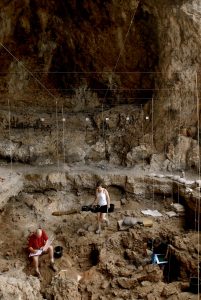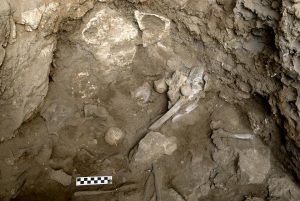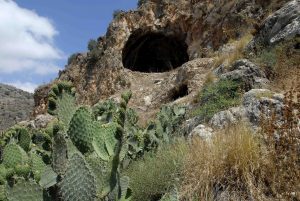Archaeologists discovered remains of one of the oldest funeral banquets that reveals a preplanned event reflecting social interaction in late Palaeolithic. The find was made in Hilazon Tachtit cave in northern Israel by a team of the Hebrew University of Jerusalem. It consisted of remains of a woman laid on a bed of specially selected materials, including gazelle horn cores, fragments of chalk, fresh clay, limestone blocks and sediment. There were also 86 tortoise shells placed under and around her body and sea shells, an eagle’s wing, a leopard’s pelvis, a forearm of a wild boar and even a human foot place on top of the body. The burial space was sealed with a large stone slab.

Three other grave pits have been found at the site of Hilazon Tachtit since 1995, and most contained bones of several humans. The burial of the woman measured approx. 0.7 x 1 x 0.45 m. The individual measured 1.5 m in hight. Unusual objects listed above, that were found in the grave point to the uniqueness of the event and the woman, as archaeologists state.

Documentation of the excavations enabled to reconstruct the stages of the funerary ritual that was connected with the burial of the woman. First an oval grave pit was dug in the cave floor, afterwards a layer of objects was put between large stones, such as seashells, a broken basalt palette, red ochre, chalk, and several complete tortoise shells. They were covered by a layer of sediment containing ashes, and garbage composed of flint and animal bones. Probably next the woman was laid inside the pit in a child-bearing position, and special items including many more tortoise shells were placed on top of and around her. A layer of filling and limestones covered the body and a large heavy stone sealed the grave in the end.

Archaeologists state that this unusual Late Natufian funerary event in Hilazon Tachtit Cave provides strong evidence for community engagement in ritual practice and contributes to the growing picture of social complexity in the Natufian period as a predecessor for increasingly public ritual and social transformations in the early Neolithic period that follows. The Natufian period is dated between 15000-11500-years-ago in the southern Levant and marks the beginning of the transition to agriculture.
(after EurekAlert!)